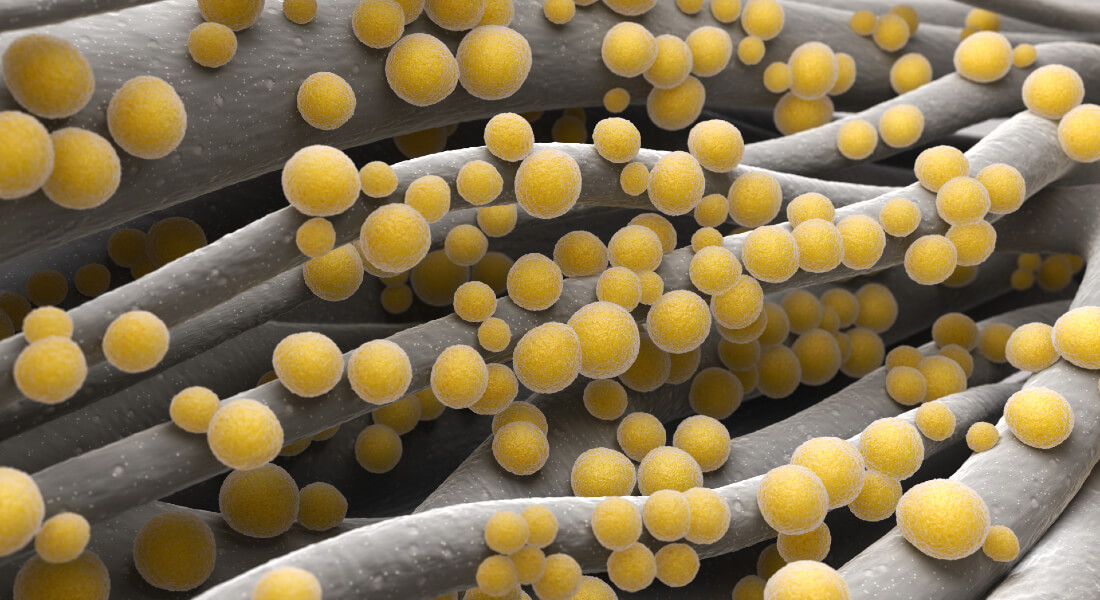Germs can offset the effect of cancer therapy
An infection with the bacteria Staphylococcus aureus tends to worsen the condition for patients with a specific lymphoma type. A Danish research team has identified the cause, providing hope for improved treatment.

The bacteria Staphylococcus aureus (S. aureus) can worsen the condition of patients with the lymphoma type Sezáry syndrome. A Danish research team has found an underlying mechanism. The improved understanding gives reason to hope that a more efficient treatment for this type of cancer can be found.
We are the first to show that S. aureus can produce toxins which trigger resistance in certain cancer cells to drugs used in Sezáry syndrome treatment.
“Consequently, an efficient treatment must address both the bacteria and the cancer itself,” says head of the research team Niels Ødum, Professor at the Department of Immunology and Microbiology, University of Copenhagen.
The results are published by the scientific journal Blood, American Society of Hematology, with PhD Student Chella Krishna Vadivel, Assistant Professor Terkild B. Buus, and Niels Ødum from LEO Foundation Skin Immunology Research Center as the main contributors.
Germs are part of a vicious circle
Sezáry syndrome affects three people per million citizens in the Western populations. Many patients are caught in a vicious circle. Both the cancer itself and the anti-cancer treatment weakens the immune system. This provides bacteria such as S. aureus with ample conditions for growth. The bacteria settle in skin lesions which are associated with the disease. Here, they produce the toxins which makes it harder to treat the cancer.
“According to our results, the cancer cells can be made more susceptible to anti-cancer drugs by eliminating S. aureus and its toxins. If the effect can be shown to be equally good in patients, the perspective is that cancer activity can be dampened by taking out S. aureus and mitigate renewed colonization in the skin,” says Chella Krishna Vadivel.
While the focus of the article in Blood is the mechanism behind the ability of S. aureus to worsen Sezáry syndrome, the research team also takes an interest in ways to improve future treatment. According to the researchers it should be possible to combat S. aureus with the enzyme type endolysins. The enzymes originate from bacteriophages which are viruses able to kill specific bacteria. In this manner, it is possible to target just S. aureus while other bacteria which are beneficial to the patient will not be affected.
The dawn of a new research field
Endolysin treatment would be a both specific and mild method, explains Terkild B. Buus:
"Antibiotic treatments for S. aureus infections already exist but they come with certain drawbacks. Firstly, these are rather harsh treatments which may cause serious unwanted side-effects. Secondly, S. aureus will typically reappear as soon as the treatment is stopped. And thirdly, there is a risk of the bacteria becoming resistant to antibiotics. Therefore, antibiotic treatment is currently reserved to severe infections. Endolysins will be a non-antibiotic alternative, and it seems likely that it could be administered at an early stage thus mitigating serious infections.”
The implication would be a double advantage. The patient will not suffer from the wounds caused by the bacterial growth, and the bacteria will not offset the effect of the cancer therapy.
Besides the benefits for patients with Sezáry syndrome, the discovery may have wider implications, according to Niels Ødum:
“We are looking at a new understanding of the way toxins produced by bacteria can trigger resistance in cancer cells to treatment. It may be, that other bacteria can play similar roles in relation to other types of cancer. For instance, something similar has been shown in a colon cancer study. Since that was an animal study, further research will be required before we can state that this is also relevant in relation to humans. Nevertheless, we are seeing the dawn of an interesting new field of research.”
The scientific article in Blood can be found here
Contact
Tel.: +45 28 75 78 79
